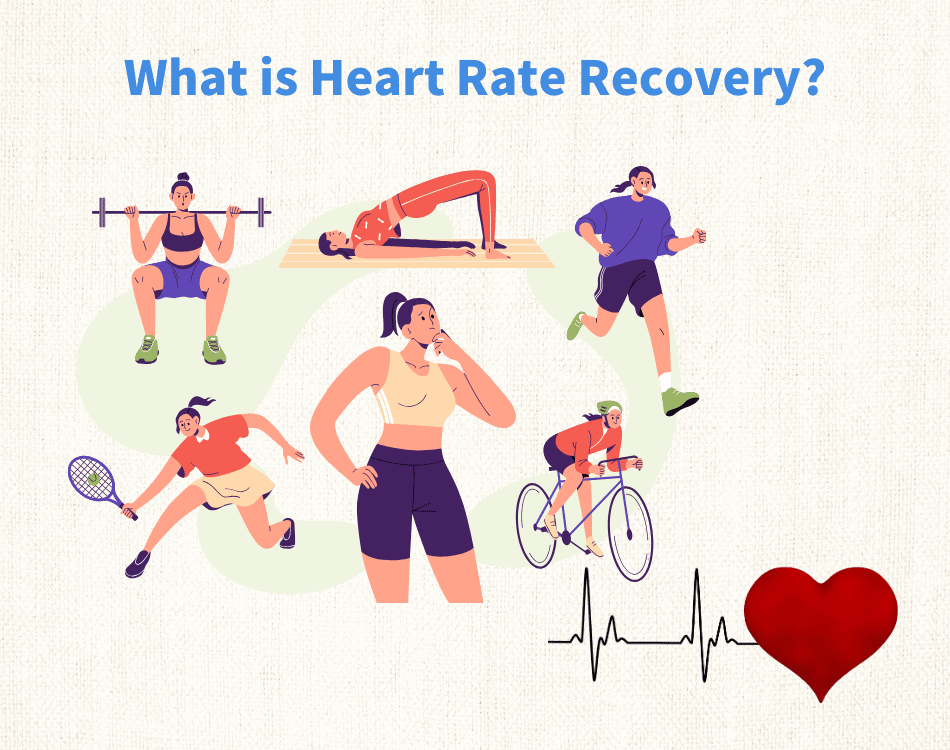Unlocking the Secrets: What a 30 bpm Cardio Recovery Rate Reveals About Your Fitness Level!
Understanding your cardio recovery rate is essential for evaluating your fitness level and cardiovascular health. The cardio recovery rate is a measure of how quickly your heart rate returns to its resting level after exercise, and a recovery rate of 30 beats per minute (bpm) is often seen as a strong indicator of good fitness. This rate signifies that your heart is efficient at recovering from exertion, which can have significant implications for your overall health. By understanding recovery rates, individuals can monitor their fitness progress, tailor their training regimens, and foster a healthier lifestyle. In this article, we delve into what a 30 bpm recovery rate means and how it reflects your fitness journey.

Understanding Cardio Recovery Rate
The cardio recovery rate is defined as the number of beats your heart slows down after ceasing physical activity. This measurement is typically taken while resting and is most commonly assessed one minute after intense exercise. The physiological process involves the autonomic nervous system, which regulates heart rate and blood flow. When you exercise, your heart rate increases to supply muscles with oxygen-rich blood. Post-exercise, your heart rate should gradually decrease as your body transitions back to a resting state. A quicker recovery suggests better cardiovascular fitness, as it indicates that your heart and circulatory system are functioning efficiently. Monitoring your cardio recovery rate can provide valuable insights into your cardiovascular health and general fitness capabilities.
What Does a 30 bpm Recovery Rate Indicate?
A cardio recovery rate of 30 bpm indicates a strong cardiovascular response to exercise, suggesting that your heart is effectively adapting to physical stress. This rate can be interpreted differently across various demographics. For younger, athletic individuals, a 30 bpm recovery rate may represent a baseline for good health, while for older adults or those with lower fitness levels, achieving this rate may indicate significant improvement. Studies suggest that a recovery rate of 30 bpm is often associated with a lower risk of heart disease and improved overall health. Personal anecdotes from friends who have achieved this rate during their fitness journeys often highlight a sense of accomplishment and increased motivation to maintain an active lifestyle. Monitoring heart rates during workouts can encourage individuals to push their limits while also emphasizing the importance of recovery.
Factors Influencing Cardio Recovery Rate
Several factors can influence an individual's cardio recovery rate, including age, fitness level, and overall health. Younger individuals typically experience quicker recovery rates due to a more efficient cardiovascular system. In contrast, older adults may find that their recovery rate slows down due to natural aging processes. Additionally, the intensity and duration of exercise play a crucial role; higher-intensity workouts may lead to slower recovery rates as the body requires more time to return to homeostasis. Lifestyle choices, such as diet, hydration, and sleep quality, also greatly impact recovery. A friend of mine, who shifted to a balanced diet and prioritized hydration, noticed remarkable improvements in her recovery rate, which motivated her to engage in more frequent workouts. Therefore, understanding these influencing factors can help individuals make informed decisions about their fitness regimes.
How to Improve Your Cardio Recovery Rate
Improving your cardio recovery rate involves a combination of effective training methods, proper nutrition, hydration, and sufficient rest. Incorporating interval training into your workouts can boost cardiovascular efficiency and enhance recovery rates. Additionally, focusing on a balanced diet rich in antioxidants and essential nutrients supports overall heart health. Hydration is critical; maintaining fluid balance aids in recovery and performance. Moreover, prioritizing rest and sleep is crucial for your body to rejuvenate and recover effectively. Many fitness enthusiasts track their recovery progress over time, noting improvements in their performance and endurance. Regularly monitoring your heart rate during workouts can also provide insights into your recovery trends, helping you adjust your training accordingly. By implementing these strategies, you can work towards achieving that coveted 30 bpm recovery rate.
Empowering Your Fitness Journey Through Recovery
In summary, a cardio recovery rate of 30 bpm is a significant marker of cardiovascular fitness, indicating that your heart is adapting well to physical exertion. Understanding and monitoring your recovery rate can empower you to assess your fitness journey, set realistic goals, and make informed health choices. By incorporating effective training strategies, maintaining a healthy lifestyle, and prioritizing recovery, you can strive to improve your own cardio recovery rate. Remember, fitness is a personal journey, and recognizing the importance of your recovery rate is a vital step toward achieving optimal health and well-being.








